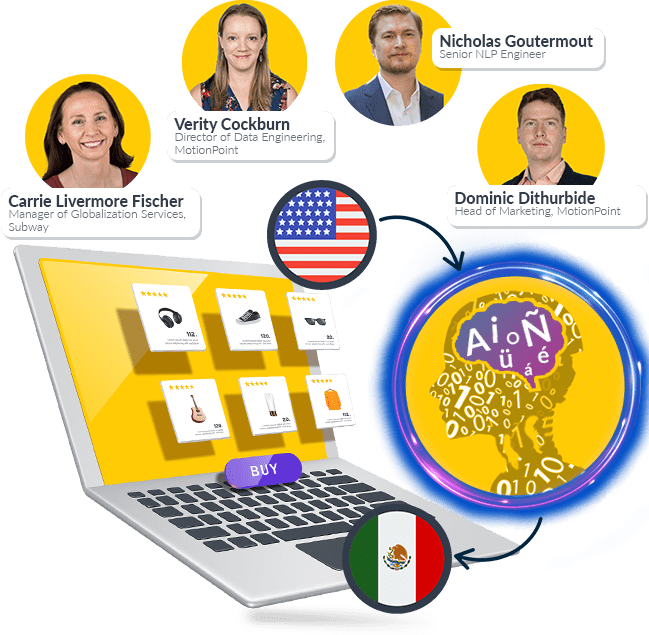Your multilingual customers want to manage their accounts, upgrade their services, review their wealth and health information and more within secure online experiences.
These secure customer portals drive down customer service costs, increase company productivity and accelerate cross-sell and upsell opportunities.
But it's not enough to offer the same monolingual portal to international and multilingual constituents. To provide a stellar CX that resonates and converts, companies must localize these experiences in their audience's preferred languages.
Historically, localising portals-especially with in-house teams-has been painful, complicated, and very costly. Read on to learn the challenges of taking on a portal localisation project in-house, and how to sidestep them completely with a different approach.
Operational Risks and Complexities
Launching and operating multilingual portals requires more people, performing more tasks, than most companies realise. This leads to continuous effort and costs that go well beyond mere translation.
In fact, portals are often more challenging to translate than traditional public-facing websites-which are notoriously difficult to localize on their own-because of the complex web applications, interactive functionality and dynamic technologies they use to present personalised experiences to users.
Companies often consider localising these experiences with in-house resources. For these teams, many tasks await … as well as many stages where workflows can break down. At a high level, in-house teams must:
- Thoroughly compile content for translation, including text, images, multimedia, PDFs and more
- Develop and manage translation and QA workflows
- Send translatable content to in-house translators or offsite vendors
- Own the process of getting that material translated quickly and accurately
- Own the process of vetting the content for accuracy and brand consistency
- Integrate the translated content into the multilingual “instance” of the portal
- Ensure the translated content fits seamlessly within established page templates
- Manage the exponential growth of resources required when adding more languages
- Follow this complex and costly process again and again, every time you add or change content on your origin portal
Technical Risks and Complexities
Unfortunately, the challenges extend beyond the translation process for in-house teams. The technical aspects of the project can derail these projects for months, or sometimes over a year-or so thoroughly, the projects are abandoned altogether.
Multilingual Portal Features
Many third-party portal providers offer multilingual capabilities, but most fall short under the pressures of day-to-day portal translation. These solutions usually shift all the complexity and on-going effort-including technical configuration, collecting translatable content, translation, and publication on the localised portal-onto their customers. This increases risks and cost.
Legacy Systems and Disparate Coding Languages
It's common for companies to use content databases that have been in use for many years (even decades!), or operate custom-built portals that leverage several coding languages or frameworks. Unforeseen compatibility issues often arise in these situations during the localisation process.
Single-Page Applications
Many portals use complex web applications, powered by Angular, React and other frameworks. Within the context of portal localisation projects, it's extremely challenging to identify and export translatable text from these applications while also preserving their JavaScript framework logic. And once that content is localised, it must be then reintegrated back into the application.
Dynamic Content
Many portals leverage AJAX calls that produce dynamic content that would not be seen "on the page" and fed through either JSON or XML. For portal localisation, translators must use sophisticated JSON and XML parsers to find this content. Ideally, it should also enable customers to select content elements that must be translated, and allow other text to simply pass through as untranslated.
Look for Effortless Solutions
With so much at stake, look beyond in-house options for a portal translation solution built to handle the demands of content detection, translation, integration and coding in a timely and coordinated way. As you evaluate your options, consider your pain points-and look for answers to these questions:
- Is the solution built with the purpose of minimising the operational complexity and cost you'd face with an in-house approach?
- Is it effortless and turn-key at launch and on-going, with all personnel, processes and technology provided by the vendor?
- Can it handle the translation, deployment, and operation of multilingual portals while optimising the customer experience across all other channels?
- Is it designed to handle all the under-the-hood complexities that’d otherwise make the project a burden for your IT team?
- Can it work with any portal platform or programming language?
The success of your company’s global expansion depends on technologies and processes that eliminate in-house burdens, not increase them. Make sure the portal translation vendor you choose has the necessary technology and expertise to make your customer experience a successful one.
Last updated on December 11, 2019

